Carl E. Olson's Blog, page 158
April 6, 2013
Preparation, Proclamation, Perseverance, and Purpose
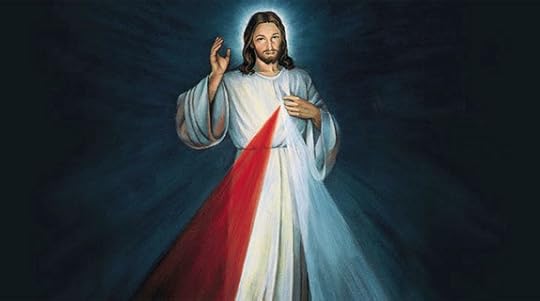
A Scriptural Reflection on the Readings for April 7, 2013 (Sunday of Divine Mercy) | Carl E. Olson
Readings:
• Acts 5:12-16
• Ps 118:2-4, 13-15, 22-24
• Rev 1:9-11a, 12-13, 17-19
• Jn 20:19-31
It is fitting that on this second Sunday of Easter, decreed
in 2000 by Pope John Paul II to be Divine Mercy Sunday, that the readings
provide a biblical blueprint of how divine mercy and grace would spread in the
months and years immediately following the Resurrection.
During the Easter season, leading up to the great Feast of
Pentecost, readings from the Acts of the Apostles take the place of Old
Testament readings. In this way the connection between “all that Jesus did and
taught” (Acts 1:1) and all that the apostles did and taught can be clearly seen
and reflected upon. The Evangelist Luke portrayed Jesus as The Prophet who would
do great signs and wonders (the greatest being His death and resurrection) and
in the Acts of the Apostles he depicted the early Christians—especially the
apostles Peter and Paul—as doing “many signs and wonders among the people”
(Acts 5:12).
The blueprint of mercy can be summed up in four words:
preparation, proclamation, perseverance, and purpose.
The preparation began during the ministry of Jesus, as He
spent countless hours, days, and months with His disciples, teaching them by
both word and example. Christ’s Passion and the Resurrection took that
preparation to a place the disciples could barely begin to fathom prior to
those dramatic events. Today’s Gospel reading highlights, in the well-known
story of doubting Thomas, that the process of preparation was not a quick or
easy one. As the disciples hid behind closed doors, they were often filled with
fear and confusion. But the appearance of the Risen Christ in their midst was a
source of peace and joy. And so they received their instructions: “As the
Father has sent me, so I send you.” Then, later, in response to Thomas’s famous
cry—“My Lord and my God!”—Jesus further prepared the disciples for their divine
mission by pointing them toward the many souls in need of the Gospel: “Blessed
are those who have not seen and have believed.”
The proclamation of that Gospel is seen all through Acts,
including in today’s reading. The signs and wonders performed by Christ were soon
being performed by the leaders of His Body, the Church, and that Body grew quickly.
Luke emphasized the “signs and wonders” throughout his Gospel to present Jesus
as the New Moses. Those marks of prophetic activity are mentioned many times in
Acts, notably in Peter’s sermon on Pentecost and his recitation of the prophet Joel
(2:17-22), and in today’s reading, which describes the proclamation of God’s
word by the apostles (cf., 4:29-30), especially the head apostle, Peter.
In addition to Acts, the readings during Easter include
selections from the final book of the Bible, the Revelation of Jesus Christ.
One reason is to show the perseverance of the early Christians—including the
author, John—in the face of persecution. John the Revelator referred to both
when he wrote of the “endurance we have in Jesus”; he explained that he had
been exiled to the island of Patmos (about 37 miles southwest of modern Turkey)
“because I proclaimed God’s word and gave testimony to Jesus.” While
celebrating the Lord’s Day—likely in the course of the Liturgy—John saw the
risen and victorious Christ standing among the lamp stands, representing the
Church. The Son of Man, “the first and the last,” assures John that the
perseverance of the saints is not in vain, but will be rewarded by eternal
life: “Once I was dead, but now I am alive forever and ever.”
We return to today’s Gospel to find a perfect summation of
the purpose of these many actions of preparation, proclamation, and
perseverance. John explained that much more could have been written about Jesus
in his Gospel, but that “these are written that you may come to believe that Jesus
is the Christ, the Son of God, and that through this belief you may have life
in his name.” By God’s mercy and grace, may we believe more deeply and
experience more fully the life of the Risen Lord!
(This "Opening the Word" column originally appeared in the April 15, 2007, issue of Our Sunday Visitor newspaper.)
April 5, 2013
Praise for "Francis: Pope of a New World" by Andrea Tornielli
"And it's Ignatius by a nose." So writes Mark Judge at the start of his review of Francis: Pope of a New World (Ignatius, 2013), by Andrea Tornielli, which is available now as an e-book and in hardcover on April 10:
Since Pope Francis was elected March 13, there has been a breathless
scramble by publishers to get anything by or about the pontiff into
stores and onto Kindles. The first one out is Andrea Tornielli's Jorge Mario Bergoglio: Francis: Pope of a New World. It's published by Ignatius Press, the popular Catholic house that published most of the books by Pope Benedict XVI.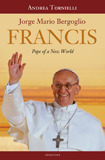
Francis: Pope of a New World is exactly what you would
expect of a book published by a respected house in two weeks: a
serviceable primer that uses lengthy quotes from other sources. Still,
Tornielli, a writer for the Vatican Insider website, is a good
storyteller, and his insane deadline may have contributed to the
lucidity of his prose. He's like a hard crime writer who had to chop
anything superfluous in the rush to pub date.
Thus, we get a general sketch of Jorge Bergoglio, the man who would
become pope. His parents were Italian immigrants to Argentina. They were
devout Catholics, and during a confession when he was a young man Jorge
felt the call to the priesthood. He joined the Jesuits because he liked
the tough language of the order that called itself "the pope's Marines"
(of course, today they're more like Obama's army).
He felt a particular compassion for the poor, and insisted on living
simply even as moved up the ranks. He cooked for fellow priests and rode
the subway to work. He moved up to Archbishop of Buenos Ares, and then
was appointed a cardinal by John Paul II.
Tornielli relies on a lot of long block quotes, but his choices are
always interesting. Very soon a picture emerges, and it is one that
reveals just what a tonic, in fact how revolutionary, Francis may turn
out to be.
Read Judge's entire review on the RealClearBooks.com site.
Over at National Review Online, Michael Potemra also offers praise for the biography:
Ignatius Press has just released an insta-book that is an impressive account of the recent papal transition. ... The author, prominent Italian
Vaticanista Andrea Tornielli, provides the key details of the
resignation of Benedict XVI and the subsequent papal election and
inauguration, as well as a biography and character study of the new
pope.
Tornielli does a good job of assembling the existing Spanish-language
and other sources into a coherent portrait of a humble but strong
pastor: “someone who came to serve and not to lord it over [people,] a
man . . . who came to facilitate their encounter with Jesus. Nearness,
mercy, gentleness, patience: These are the words of Father Bergoglio.” ...
There is also a hint that the new pope is less interested in church
controversies about such matters as liturgical rubrics and canon law
than in more basic issues of the church’s presence in the external
world. Talking to a young priest who wanted to know whether he should
wear a cassock, he said: “The problem is not whether or not you put it
on but whether you roll up the sleeves to work for others.”
Tornielli was recently interviewed by ZENIT about the book:
ZENIT: You are an expert on the Vatican, but our new Pope comes from
afar. How did you set about studying this new subject, and so quickly?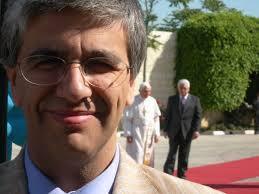
Tornielli: It was not so difficult for me because I've known him
for 10 years, and met with him a few times in Rome. I also interviewed
him one year ago, in February 2012. ...
ZENIT: Related to question two, now that Francis is under global
scrutiny, seemingly small choices -- say, the color of shoes, or style
of chair -- might be given far-reaching interpretations, something along
the lines of "He is using a simpler white chair, so he's making a break
with his predecessor (or predecessors.)" What's your perspective on
Francis' choices in these first days as Pope?
Tornielli: I don't agree with the analysis about the breaks with his
predecessor. Gossip over continuity and breaks with previous popes based
on mozzettas, ermine furs and red shoes is threatening to overshadow
the reality of true continuity between Benedict XVI and Francis. Theirs
is a continuity that finds proof in several passages, in small deeds and
acts that were seen and heard during the first few days of this
pontificate: the humility shown by both, their shared knowledge that the
Church is ultimately led by God, and their sense of peace.
ZENIT: Tell us some of the things readers might be surprised to learn about Francis from your book?
Tornielli: I think first of all, to discover that Francis is a Church
man so rigorous with himself but also merciful to others. He is a very
humble and poor man, a real witness of the Gospel. In one of the
chapters of my book, I share the story about his last Mass in the
residence for priests of via della Scrofa in Rome, in which he lived
before the conclave. He concelebrated Mass every day with the other
priests, but the last day he wanted to concelebrate serving a Mass
presided by a priest, with the cardinal serving as "altar boy."
Pope Francis, SJ
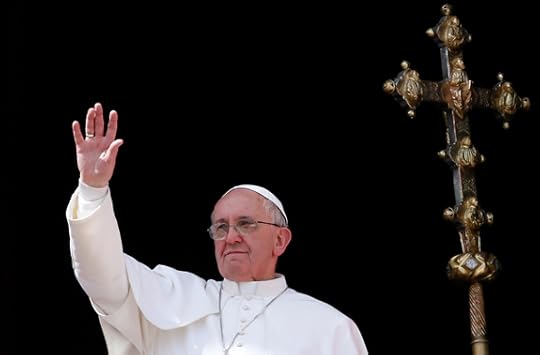
Pope Francis, SJ | Michael Severance | Catholic World Report
Several prominent members of the Society of Jesus reflect on the election of their fellow Jesuit as pope.
Pope Francis is different. Already in his young papacy, there are many
examples of his different approach to matters big and small, personal and
public.
On the smaller, personal level, there are the reports of how the Holy
Father refuses to ask others to do many things he can simply do himself, like
making telephone calls. He surprises local telephone operators when they hear
his voice, and his friends in Argentina take a step back in disbelief when he
says “It’s Cardinal Bergoglio” or “Jorge” ringing from the other side of the
Atlantic.
Some of the differences are occasioned by unusual historical
circumstances. On the Saturday prior to Holy Week, he visited the pope
emeritus, Benedict XVI, at Castel Gandolfo, an unprecedented meeting. The video
footage showed the younger, more animated Francis sharing a warm greeting with
his older, increasingly fragile predecessor.
When Francis and Benedict entered the private chapel, the pope emeritus
gestured to his successor to take his seat at the white papal chair in front of
the altar. But Francis instead knelt beside Benedict in brotherly prayer. What
could have been an awkward moment between the two white-cassocked men was
masterfully handled by Francis.
The following day at the Palm Sunday Mass in St. Peter’s Square, Francis
kept his security detail on their toes when he set out to greet adoring
pilgrims. His impromptu personal greetings and blessings have already been much
noted and remarked upon. Then there was the news from the Vatican Press Office,
last Tuesday, that for the time being Francis “intends to remain in the Domus
Sanctae Marthae and stay with the employees…[because] he is experimenting with
this type of living arrangement…in community with others.”
More significantly, Francis moved the traditional Holy Thursday Mass and
the ritual washing of feet—usually a ticketed event at the Basilica of St. John
Lateran—to an intimate location at a Roman juvenile detention center, closed to
the media. In another unprecedented action, he washed the feet of 12 inmates, including
two women and two Muslims, a fact that sparked a flurry of debate and
discussion among Catholics, prompting the Vatican Press Office to release a statement explaining the action
as “the very beautiful and simple gesture of a father who desired to embrace
those who were on the fringes of society; those who were not refined experts of
liturgical rules.”
Getting
ready for a Jesuit
Not least among Francis’ papal “firsts” is the fact that he is the first
Jesuit ever to be elected pope.
The Vampire School

The Vampire School | Anthony Esolen | Catholic World Report
The Vampire School drains the life out of learning, producing dull workers for the Vampire State.
“Schools, I
hear it argued, would make better sense and be better value as nine-to-five
operations or even nine-to-nine ones, working year-round. We’re not a farming community anymore, I
hear, that we need to give kids time off to tend the crops. This new-world-order schooling would serve
dinner, provide evening recreation, offer therapy, medical attention, and a
whole range of other services, which would convert the institution into a true
synthetic family for children, better than the original one for many poor kids,
it is said—and this would level the playing field for the sons and daughters of
weak families.
“Yet it
appears to me as a schoolteacher that schools are already a major cause of weak
families and weak communities. They
separate parents and children from vital interaction with each other and from
true curiosity about each other’s lives.
Schools stifle family originality by appropriating the critical time
needed for any sound idea of family to develop—then they blame the family for
its failure to be a family.” (John
Taylor Gatto, Dumbing Us Down: The Hidden
Curriculum of Compulsory Schooling)
One day it
struck John Taylor Gatto, Teacher of the Year for New York State in 1991 (and
therefore, inevitably, disliked by his administrators), that our schools were not failing. Rather, they were succeeding fabulously at
what they were constructed to do: to produce dull and compliant workers in a
technocratic economy. School, he argued,
instills in us a perpetual childish neediness.
We need to toady for grades, because we need to get into the “best”
schools, because we need to have a prestigious and well-remunerated job,
because we need to buy a lot of stuff to
pretend to fill the emptiness of our lives.
Among that stuff will be the odd child or two, who will also need to
toady for grades, to get into the “best” schools, and so on, world without end,
Amen.
The Vampire State naturally requires a
Vampire School. Recall the two things
everybody needs to know about vampires.
April 4, 2013
New: "The Miracle of Father Kapaun: Priest, Soldier and Korean War Hero"
Now available from Ignatius Press:
The Miracle of Father Kapaun: Priest, Soldier and Korean War Hero
by Roy Wenzl and Travis Heying
Emil Kapaun--priest, soldier and Korean War hero--is a rare man. He will posthumously receive the Medal of Honor at the White House and is being considered by the Vatican for canonization as a saint.
As remarkable as this double honor are the non-Catholic witnesses who attest to Father Kapaun's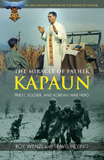 heroism: the Protestants, Jews and Muslims who either served with the military chaplain in the thick of battle or endured with him the unbelievably brutal conditions of a prisoner of war camp. As journalists Roy Wenzl and Travis Heying discovered, all of these Korean War veterans, no matter their religion, agree that Father Kapaun did more to save lives and maintain morale than any other man they know.
heroism: the Protestants, Jews and Muslims who either served with the military chaplain in the thick of battle or endured with him the unbelievably brutal conditions of a prisoner of war camp. As journalists Roy Wenzl and Travis Heying discovered, all of these Korean War veterans, no matter their religion, agree that Father Kapaun did more to save lives and maintain morale than any other man they know.
Then there are the alleged miracles-the recent healings attributed to Father Kapaun's intercession that defy scientific explanation. Under investigation by the Vatican as a necessary step in the process of canonization, these cures witnessed by non-Catholic doctors are also covered in this book.
In tracking down the story of Father Kapaun for the Wichita Eagle, Wenzl and Heying uncovered a paradox. Kapaun's ordinary background as the son of Czech immigrant farmers in Kansas sowed the seeds of his greatness. His faith, generosity and grit began with his family's humility, thrift and hard work. Lavishly Illustrated with 32 pages of Photos.
Roy Wenzl is an award-winning reporter for the Wichita Eagle. He is the primary author of Bind, Torture, Kill: The Inside Story of the Serial Killer Next Door (Harper Collins, 2007) and a co-producer of the documentary film The Miracle of Father Kapaun.
Travis Heying, a photographer, reporter and war correspondent for the Wichita Eagle, earned acclaim for his series on Afghan detainees. He produced and directed the film documentary The Miracle of Father Kapaun.
"Whether you know nothing about Father Emil Kapaun or have read other books or articles about him, you will be grateful that you took the time to read this one. I am glad that I did."
- Most Rev. Michael O. Jackels, Bishop of Wichita
"This is the story about a "Man's Man!" He was a hero. He was holy. He was real. What a great book - I could not put it down and read it in one sitting! Fr. Kapaun's story will inspire you too to live your life for God and others and be the saint that God is calling you to be!"
- Fr. Larry Richards, Author, Be A Man!
"We need heroes to teach us how to live and decide in the concrete situations of our daily lives. Father Emil Kapaun is a figure whose heroism during the Korean War still serves as a lamp to guide our feet on the path of life.The Miracle of Father Kapaun will introduce you to this inspiring figure of a man for others. His care of the soldiers imprisoned with him inspired hope in them. I invite you to discover a priest, Army Chaplain, and hero on the pages of this book."
- Archbishop Timothy P. Broglio, Archbishop for the Military Services, USA
"The Father Kapuan story has long been in need of more widespread knowledge. It is a priestly life of service and dignity. The record of military chaplains is a special category in the service of God and the men who fight, even a service to their enemies, as is the witness of Father Kapaun's death in a prison camp reminds us."
- James V. Schall, S.J., Georgetown University
"Father Emil Kapaun was a modern American priest-hero whose unique and inspiring story should be known to every Catholic."
- James Hitchcock, Author, History of the Catholic Church
Video trailer for the book:
Priest recipient of next week’s Medal of Honor subject of new book
Fr. Emil Kapaun’s incredible story now available
ATLANTA, April 3, 2013 – Fr. Emil Kapaun will receive the Medal of Honor from the President of the United States next Thursday at the White House, nearly 60 years after he heroically gave his life in the Korean War. The Vatican is also considering him a possible candidate for Sainthood.
And today, his life, service and hero’s death is the subject of an incredible new book,  The Miracle of Father Kapaun: Priest, Soldier and Korean War Hero, published by Ignatius Press. One of the most remarkable aspects of his story surrounds the atypical movement of support for both his sainthood cause and his Medal of Honor award. The witnesses to both his sanctity and his bravery have come from non-Catholics, men of Jewish faith, Muslim faith and Protestant tradition, who served with Fr. Kapaun in battle or in the brutality of conditions where he drew his last breath – a prisoner of war camp. They have spent years petitioning the Vatican to elevate him to Sainthood because of what they witnessed on the battlefield.
The Miracle of Father Kapaun: Priest, Soldier and Korean War Hero, published by Ignatius Press. One of the most remarkable aspects of his story surrounds the atypical movement of support for both his sainthood cause and his Medal of Honor award. The witnesses to both his sanctity and his bravery have come from non-Catholics, men of Jewish faith, Muslim faith and Protestant tradition, who served with Fr. Kapaun in battle or in the brutality of conditions where he drew his last breath – a prisoner of war camp. They have spent years petitioning the Vatican to elevate him to Sainthood because of what they witnessed on the battlefield.
In tracking down the amazing story of Fr. Kapaun first for the Wichita Eagle newspaper, authors Roy Wenzl and Travis Heying uncovered a paradox. Kapaun’s ordinary background as the son of Czech immigrant farmers sowed the seeds of his greatness. This is a true patriot’s story. Says author Roy Wenzl, “Kapaun’s friends do not consider themselves experts on miracles, but they know what they saw, and as far as they are concerned, the man himself was something like a miracle. By the time we talked to most of them, the secretary of the Army and the chairman of the Joint Chiefs of Staff had learned enough about the already decorated U.S. Army captain to recommend him, posthumously, for the highest military honor in the United States. The Pentagon is in the business of declaring war heroes, not saints. But to many of Kapaun’s eyewitnesses, they amount to the same thing.”
To schedule interviews with the authors, or to receive a review copy, please contact Kevin Wandra (404-788-1276 or KWandra@CarmelCommunications.com) of Carmel Communications.
April 3, 2013
The American Republic: The Vision and the Transformations
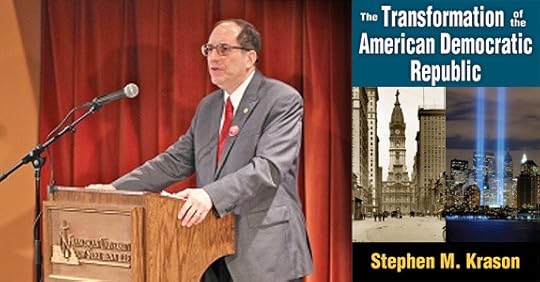
The American Republic: The Vision and the Transformations | Anne Hendershott | Catholic World Report
A review of The Transformation of the American Democratic
Republic by Stephen M. Krason.
From the earliest years of the fledgling American Democratic
Republic, there was great uncertainly about the limits of the authority of
Congress. While the federal
government was considered to have limited and enumerated powers, even in these
early years, there were concerns that the authority of the federal government
would grow. On September 22, 1832,
John Marshall, the Chief Justice of the Supreme Court, confided to a colleague:
“I yield slowly and reluctantly to the conviction that our constitution cannot
last.” Having written the unanimous
decision in Marbury v. Madison (1803) overturning
an act of Congress as “unconstitutional” for the first time in history, Chief
Justice Marshall was among the first to truly understand the threats to the
Constitution from our own government.
We can only imagine what Marshall might have thought of the
regulations issued by the federal government requiring religious institutions’
health insurance plans to cover contraception—including sterilization and
abortifacients—under the current federal health care law. The mandate is something that the Founders
could never have imagined. To understand how this transformation of the power
of the national government occurred, we can turn to The
Transformation of the American Democratic Republic, a new book by Dr. Stephen M. Krason, professor of political
science and legal studies at Franciscan University of Steubenville.
Krason’s analysis builds upon two key questions:
20% off select books and films in celebration of Divine Mercy Sunday

20% off select books and films in celebration of Divine Mercy Sunday!
Offer ends April 9th, 2013 at 12:00 midnight EST. These prices are available online only through Ignatius.com
"Mercy
is the central nucleus of the Gospel message; it is the very name of
God, the Face with which he revealed himself in the Old Covenant and
fully in Jesus Christ, the incarnation of creative and redemptive Love”
(Pope emeritus Benedict XVI).
As we prepare to celebrate the beautiful feast of Divine Mercy let us
draw closer to the fountain of God’s mercy through prayer and
meditation. Reflect on the inconceivable gift of His mercy while reading
our Lord’s words to Saint Faustina in her Diary or while listening to our Chaplet of Divine Mercy CD . Renew your trust in Jesus and his Divine Mercy with our do-it-yourself retreat, Consoling the Heart of Jesus . Introduce your children to the story of Saint Faustina and the “refuge of the Feast of Mercy” (Diary 699) by watching Saint Faustina: My Catholic Family together or by teaching them how to pray the Divine Mercy Chaplet with the help of The Divine Mercy Chaplet for Kids .
Finally, after immersing yourself in vast depths of the ocean of Divine
Mercy, “go forth and be witnesses of God's mercy, a source of hope for
every person and for the whole world" (Pope emeritus Benedict XVI).
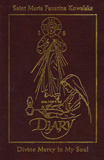 Diary of St. Maria Faustina Kowalska
Diary of St. Maria Faustina Kowalska
The message of Divine Mercy is simple: God loves us, all of us.
And he wants us to recognize that his mercy is greater than our sins, so
that we will call upon him with trust, receive his mercy, and let it
flow through us to others. The leatherbound Deluxe Edition of St.
Faustina's diary is now available in soft burgundy leather with gold
foil, gilded edges, and a ribbon marker. Generously illustrated with
over 20 pages of photos from the history of the Divine Mercy movement,
it is a book for every Catholic’s library; one that many will want to
keep next to their Bible for constant insight and inspiration.
Regular price: $29.95, sale price: $23.96
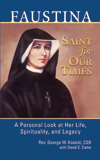 Faustina: A Saint for Our Times
Faustina: A Saint for Our Times
Fr George Kosicki
Fr. George Kosicki, well known for his expertise and writings on
the life of St. Faustina and Divine Mercy, presents an insightful look
into her life, spirituality, and mission. Learn why the life and
spirituality of St. Faustina is so vitally important to us today as Fr.
Kosicki explores why she is the saint of the new millennium and how her
mission of mercy continues today. He shows that it is a mission that the
papacies of John Paul II and now Benedict XVI have embraced.
Regular price: $14.95, sale price: $11.96
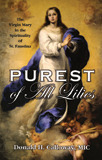 Purest of all Lilies
Purest of all Lilies
Donald Calloway
St. Faustina is well known for the revelations of Divine Mercy
that she received from Jesus and recorded in her diary. But few know
that she also received many revelations from the Blessed Virgin Mary and
enjoyed a special relationship with her. Now, in Purest of All Lilies,
a prominent Marian priest with a background in Mariology explores St.
Faustina’s rich relationship with Mary, from her love of Mary growing up
in Poland to the many diary passages that she devoted to the Mother of
God when she was a nun.
Regular price: $12.95, sale price: $9.71
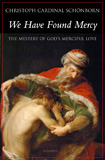 We Have Found Mercy
We Have Found Mercy
Christoph Cardinal Schoenborn
The message of Divine Mercy as communicated through Sister
Faustina is both a starting point and a recurring theme for Cardinal
Schönborn's discussion of God's merciful love. The Archbishop of Vienna
explores the presence of God's great mercy in the Scriptures, Tradition,
the life of Christ, and the sacraments and works of the Church, while
raising important questions along the way, such as, "What is the
relationship between mercy and justice?"
Regular price: $14.95, sale price: $11.96
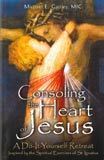 Consoling the Heart of Jesus
Consoling the Heart of Jesus
Fr. Michael Gaitley, MIC
This do-it-yourself retreat combines the Spiritual Exercises of
St. Ignatius with the teachings of Saints Therese of Lisieux, Faustina
Kowalska, and Louis de Montfort. Fr. Michael Gaitley, MIC, has a
remarkable gift for inspiring little souls to trust in Jesus, and his
Divine Mercy. As Danielle Bean, editor of Faith & Family
magazine, puts it, "The voice of Christ in these pages is one that even
this hopelessly distracted wife and mother of eight could hear and
respond to." Your schedule is never too tight to make this retreat!
Take one weekend, or break up the meditations for as long a period as
you need. Includes practical helps in appendices.
Regular price: $14.95, sale price: $11.96
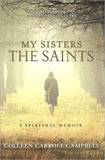 My Sisters the Saints
My Sisters the Saints
James Monti
A poignant and powerful spiritual memoir about how the lives of the saints changed the life of a modern woman.
In My Sisters the Saints, author Colleen Carroll
Campbell blends her personal narrative of spiritual seeking, trials,
stumbles, and breakthroughs with the stories of six women saints who
profoundly changed her life: Teresa of Avila, Therese of Lisieux,
Faustina of Poland, Edith Stein of Germany, Mother Teresa of Calcutta,
and Mary of Nazareth. Drawing upon the rich writings and examples of
these extraordinary women, the author reveals Christianity's liberating
power for women and the relevance of the saints to the lives of
contemporary Christians.
Regular price: $22.95, sale price: $18.36
Films
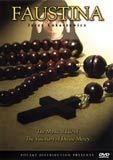 Faustina
Faustina
A drama on the life of Blessed Sister Faustina, based upon her
experiences recorded in her spiritual diary. She received from Our Lord
the visions of Divine Mercy early this century. A beautiful, artistic
portrayal of her mystical life in high quality cinema. Dorota Segda was
voted top actress of the year by film critics for her stunning portrayal
of Sister Faustina.
Regular price: $19.95, sale price: $15.96
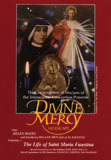 Divine Mercy: No Escape
Divine Mercy: No Escape
The moving story of St. Faustina, a young Polish nun chosen by God
to share His message of mercy with the whole world. Filmed in Poland,
the Vatican, Germany, and the United States, it stars Melanie Metcalf as
Faustina, and is narrated by screen legend Helen Hayes. It captures the
tenderness and zeal of Faustina’s heart toward her mission from Jesus,
and reveals the story of Divine Mercy unfolding today.
Regular price: $14.95, sale price: $11.96
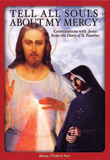 Tell All Souls About My Mercy
Tell All Souls About My Mercy
This film brings the heart of St. Faustina’s famous diary to life
in a moving and informative way. Stunning visuals, historical
photographs, meditative music, religious art, stained glass windows, and
dramatic video clips bring you this mystical experience with Jesus and
creates a powerful experience for finding hope, healing and renewal.
Regular price: $19.95, sale price: $15.96
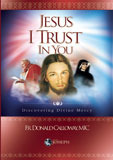 Jesus I Trust in You
Jesus I Trust in You
In this enlightening DVD presentation, Fr. Calloway shares how St.
Faustina embraced a spiritual life based on deep humility, purity of
intention, and loving obedience to the will of God in imitation of the
virtues of the Blessed Virgin Mary. He tells the story of the message of
Divine Mercy that she received from our Lord in the 1930s, and how this
message of has spread through her writings for the great benefit of
souls!
Regular price: $19.95, sale price: $15.96
Ocean of Mercy
Filmed in more than 20 cities across Poland and America, this
film examines the phenomenal lives of Blessed Faustina Kolwalska, St.
Maximilian Kolbe, and Pope John Paul II, modern day “Apostles of Mercy”.
Through rare film footage, photographs, and extensive interviews, this
story journeys across a dramatic visual landscape to document their
heroic struggle and herald the message of Divine Mercy to all mankind.
Regular price: $24.95, sale price: $19.96
Religious Mysteries Volume One
This new documentary film series presents investigations into
intriguing mysteries connected with the stories and history of famous
Catholic saints, apparitions, Popes, and holy places, and some amazing
findings from these studies. This DVD includes three separate films, one
of which, "Pope of Mercy," tells the story of the deep relationship
between Pope John Paul II and St. Faustina Kowalska, the Polish nun
whose visions in the early 20th century were the origin of the
incredible worldwide diffusion of the Divine Mercy devotion.
Regular price: $24.95, sale price: $19.96
A Time for Mercy
This award-winning film, narrated by Joe Campanella, explores
signs of God’s mercy in our time. It takes an unflinching look at the
biblical witness of God’s judgement and mercy, the offer of God’s mercy
in Christ, and the troubles of today’s world —from recurring natural
disasters and environmental threats to the growing list of human
tragedies. Learn the startling messages of Jesus Christ to St. Faustina
and why this is indeed a Time for Mercy.
Regular price: $14.95, sale price: $11.96
The Chaplet of Divine Mercy
The Divine Mercy Chaplet which millions recite today was taught to
St. Faustina by Our Lord. Jesus said, "Even the most hardened sinner,
if he recites this Chaplet even once, will receive grace from my
Infinite Mercy." Filmed at the beautiful National Shrine of the Divine
Mercy in Stockbridge, MA, this program features the Flynn family
chanting this inspiring chaplet in a traditional style.
Regular price: $9.95, sale price: $7.96
The Divine Mercy Chaplet for Kids
Today-more than ever before-our children are bombarded by an
endless array of frivolous distractions which blunt their sense of the
spiritual. They need the anchor of Jesus' Mercy to hold them fast.
Engagingly animated, this program features St. Faustina teaching her
four young friends about the Divine Mercy devotion and how to pray the
Chaplet. Covers such topics as the origins of the Divine Mercy devotion,
the value of sacrifice, the importance of the Sacrament of Confession,
and much more. Both a great teaching tool on the essentials of our
Faith, and the power of this chaplet prayer for all ages.
Regular price: $9.95, sale price: $7.96
Saint Faustina: My Catholic Family
In this wonderful animated series, My Catholic Family,
Thomas and his wife Helen help their children Alex and Sarah come to a
greater understanding of the importance of virtue by teaching them about
the lives of the Saints. Each Saint, whose story is told in the film,
has a particular important lesson from their lives to teach the children
as revealed in these entertaining and educational films that children
will love. In this episode the life of St. Faustina and the Devotion to
Divine Mercy are explored.
Regular price: $14.95, sale price: $11.96
CDs
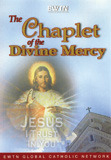 The Chaplet of Divine Mercy (Audio)
The Chaplet of Divine Mercy (Audio)
This the audio version of The Divine Mercy Chaplet film taht we
offer above. Recorded at the beautiful National Shrine of the Divine
Mercy in Stockbridge, MA, this program features the Flynn family
chanting this inspiring chaplet in a traditional style.
Regular price: $9.95, sale price: $7.96
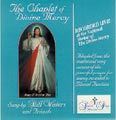 The Chaplet of Divine Mercy - CD
The Chaplet of Divine Mercy - CD
The powerful prayers of the Divine Mercy chaplet, given to St. Faustina by Jesus, are beautifully sung by the group Still Waters at
the Shrine of Divine Mercy. The music is the traditional melody used
for years by the Sisters of Our Lady of Mercy, Cracow, Poland.
Regular price: $14.95, sale price: $11.96
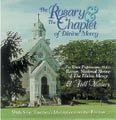 The Rosary and the Chaplet of Divine Mercy - CD
The Rosary and the Chaplet of Divine Mercy - CD
Recorded
at the National Shrine of The Divine Mercy, the prayers are led by
Shrine Rector, Fr. Dan Papineau, M.I.C., with Vinny Flynn and his Still
Waters family ministry. Colleen Free introduces each decade of the
Chaplet with a powerful meditation on the Passion from the Diary of St.
Faustina. The gentleness of the voices, together with a soft
instrumental music in the background, creates a wonderful atmosphere of
quiet meditative prayer. Includes the Recitation of the Joyful,
Sorrowful, Glorious and Luminous mysteries of the Rosary.
Regular price: $15.95, sale price: $12.76
Catholic World Report
Knights for Peace and Sanctification in the Middle East
By William L. Patenaude
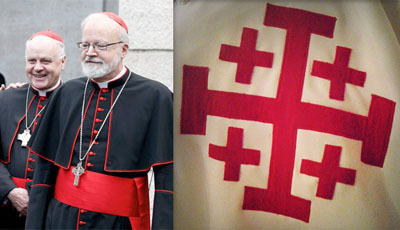
The Equestrian Order of the Holy Sepulchre of Jerusalem works to support the people and shrines of the Holy Land.
Founded soon after the First Crusade, the pontifical Equestrian Order
of the Holy Sepulchre of Jerusalem currently has some 28,000 clerical,
religious, and lay members across the globe. While the order�s titles,
regalia, and ceremonies of investiture come with great honor and dignity
(and a rigorous nomination process), membership comes with a lifetime
pledge of spiritual and worldly support for the Holy Land. As a result,
the order offers countless prayers and millions of dollars annually to
build, operate, maintain, and expand schools, youth centers, hospitals,
seminaries, homes for religious, pre- and post-natal clinics, and the
only Catholic institution of higher education in Israel, Bethlehem
University...
Homiletic & Pastoral Review
The Virtue of Fidelity
By Fr. Kenneth Baker, SJ
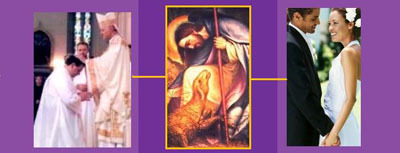
My
thoughts turn to the importance and need of fidelity precisely at this
time when the Church is being tested, both from within and from without.
Fidelity to one�s word, to one�s promises, and to one�s vows to God is
not something that can be taken for granted. This should be obvious, for
we live in a time of massive infidelity. Contracts are broken,
infidelity in marriage is not only practiced but even lauded in
magazines such as Cosmopolitan and Playboy (not to mention worse
publications), divorce is edging up to almost one for every two
marriages. Many religious men and women have abandoned their solemn
lifetime commitment to God in order to embrace some kind of social or
political work...
April 2, 2013
New: "American Church: The Remarkable Rise, Meteoric Fall, and Uncertain Future of Catholicism in America"
Now available from Ignatius Press:
 American Church: The Remarkable Rise, Meteoric Fall, and Uncertain Future of Catholicism in America
American Church: The Remarkable Rise, Meteoric Fall, and Uncertain Future of Catholicism in America
by Russell Shaw
Has the Americanization of American Catholics-their cultural
assimilation, that is-been a blessing or a curse for the Church in the
United States? Or has it been a bit of both?
In American Church Russell Shaw takes a searching look at that
question and reaches a disturbing conclusion. Cultural assimilation,
which was ardently championed by churchmen like the great Cardinal James
Gibbons of Baltimore around the turn of the last century, has
undoubtedly conferred many benefits on Catholics. Their absorption into
the secular culture of America, however, now threatens the Catholic
identity of millions of faithful and of their institutions, such as
schools, universities, and hospitals.
Shaw does not offer this conclusion as an unsupported generalization. American Church
is a richly documented analysis of a process extending over two
centuries. Colorful characters and dramatic incidents abound, including
the nineteenth-century intellectual feud between Orestes Brownson and
the Transcendentalist convert to Catholicism Isaac Hecker, Pope Leo
XIII's condemnation of Americanism, the anti-Catholicism that greeted
the presidential campaigns of Al Smith and John F. Kennedy, and the
numerous intra-Church conflicts that have divided American Catholics
since the Second Vatican Council.
In concluding his study, Shaw offers a number of thought-provoking
suggestions about what the Church in America needs to do now in the face
of an ongoing decline that is sapping its strength and may threaten its
very survival.
Russell Shaw is a widely published author and journalist who has written twenty previous books, including To Hunt, To Shoot, To Entertain: Clericalism and the Catholic Laity and Nothing to Hide: Secrecy, Communication, and Communion in the Catholic Church.
For 18 years, Shaw directed media relations for the National Conference
of Catholic Bishops and the United States Catholic Conference. From
1987 to 1997 he oversaw media relations for the Knights of Columbus.
Since resigning from that position, he has worked full time as a
freelance writer.
"The new bull-in-the-china-shop of U.S. Catholic history, Russell Shaw
upends pedestals, reimagines story-lines, and invites all of us to think
again about the roots of the severe challenges -- and great
opportunities -- facing the Church in the United States in the first
decades of the third millennium."
- George Weigel, author of Evangelical Catholicism: Deep Reform in the 21st-Century Church
"Russell Shaw marshals a good deal of evidence on behalf of his
provocative thesis about the problems of American Catholicism. Even
those who do not fully subscribe to that thesis will find the book
informative and suggestive."
- James Hitchcock, Professor of History, St. Louis University, author of History of The Catholic Church
"Russell Shaw's American Church is a piercing and essential
meditation on the past, present, and future of Catholicism in these
United States. It should be required reading for all -- secular, devout,
and otherwise -- and is beautifully narrated to boot."
- Mary Eberstadt, author, Adam and Eve After the Pill
"Russell Shaw is one of the best informed and most articulate observers
of the American Catholic experience; a writer of elegant clarity,
fairness and impeccable research. If you want to understand the Church
in the United States and the challenges she now faces, American Church should be on the short list of books you need to read."
+Charles J. Chaput, O.F.M. Cap., Archbishop of Philadelphia
The Pope's Embrace
William L. Patenaude, a contributor to Catholic World Report, forwarded me the link to an essay, "A Special Vocation: To Show People How To Love", written by Dr. Paul Gondreau, Professor of Theology at Providence College and father of Dominic, the boy with cerebral palsy who was embraced by Pope Francis in St. Peter's Square following the Easter Mass yesterday (video below). Dr. Gondreau writes:
“Small acts with great love,” Mother Teresa was fond of saying.
Yesterday, Pope Francis bestowed an extraordinary Easter blessing upon
my family when he performed such an act in embracing my son, Dominic,
who has cerebral palsy. The embrace occurred when the Pope spied my son
while touring the Square, packed with a quarter million pilgrims, in the
“pope mobile” after Mass. This tender moment, an encounter of a modern
Francis with a modern Dominic (as most know, tradition holds that St.
Francis and St. Dominic enjoyed an historic encounter), moved not only
my family (we were all moved to tears), not only those in the immediate
vicinity (many of whom were also brought to tears by it), not only by
thousands who were watching on the big screens in the Square, but by the
entire world. Images of this embrace quickly went viral, and by Easter
Sunday afternoon it was the lead picture on the Drudge Report, with the
caption, “Change Hatred into Love” (a paraphrase of Pope Francis’ Urbi
et Orbi message that followed shortly thereafter), where
it remains even as I write this. Fox News, NBC Nightly News, ABC
Nightly News, and CNN all showed clips of it. Lead pictures of it were
found in Le Figaro, the New York Post, The Wall Street Journal, the Philadelphia Inquirer, inter alia.
It is often difficult to try to express to people who do not have
special needs children what kind of untold sacrifices are demanded of us
each and every day. And as for Dominic, he has already shared in
Christ’s Cross more than I have throughout my entire life multiplied a
thousand times over. What is the purpose in all this, I ask?
Furthermore, I often tend to see my relationship with Dominic in a
one-sided manner. Yes, he suffers more than me, but it’s constantly ME
who must help HIM. Which is how our culture often looks upon the
disabled: as weak, needy individuals who depend so much upon others, and
who contribute little, if anything, to those around them.
Pope Francis’ embrace of my son yesterday turns this logic completely
on its head and, in its own small yet powerful way, shows once again
how the wisdom of the Cross confounds human wisdom.
Read the entire essay. And watch Pope Francis embrace young Dominic, beginning at the 10:25 mark:
Carl E. Olson's Blog
- Carl E. Olson's profile
- 20 followers



